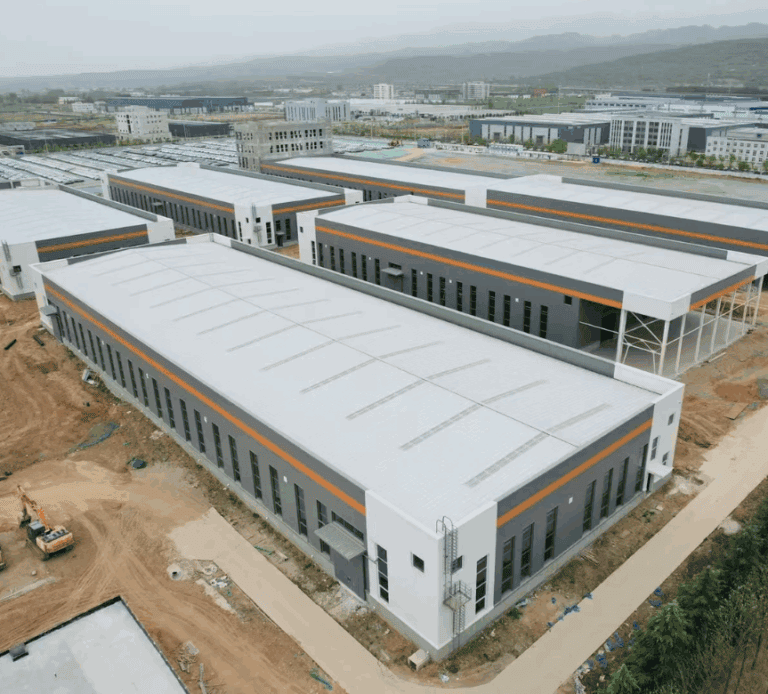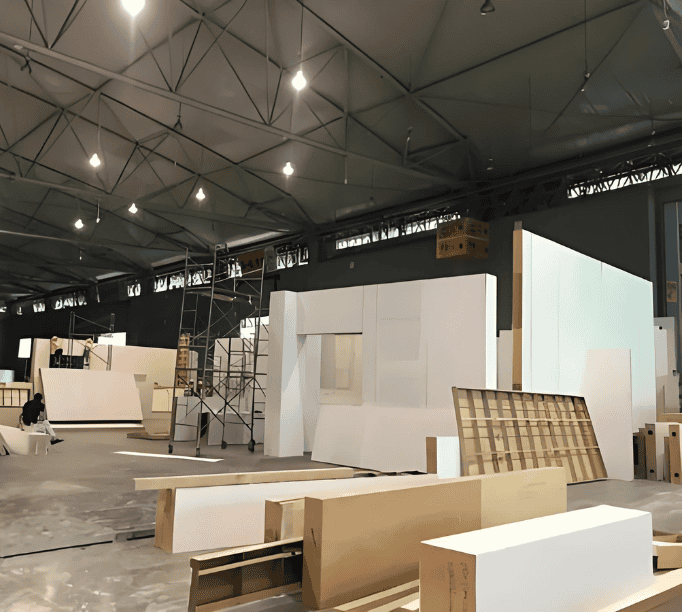Sie haben das Grundstück. Sie sind bereit zu bauen. Doch nun stehen Sie vor der Entscheidung zwischen zwei großartigen Optionen – und viel zu vielen Meinungen.
Barndominium oder Fertighaus?
Dieser Leitfaden bringt Sie durch den Lärm. Wir führen Sie durch die tatsächlichen Kosten, Zeitpläne, Haltbarkeit, Gestaltungsfreiheit und mehr.
Am Ende werden Sie sich nicht nur besser informiert fühlen – Sie werden auch genau wissen, welcher Weg zu Ihrem Grundstück, Ihrem Budget und Ihrer Zukunft passt.
Was wird in diesem Blog erwartet:
Was ist der wirkliche Unterschied zwischen einem Barndominium und einem Fertighaus?
Wenn Sie sich zwischen einem Barndominium und einem Fertighaus entscheiden müssen, müssen Sie sich zunächst darüber im Klaren sein, wie unterschiedlich ihre Strukturen und Bauweisen sind – auch wenn beide als Vollzeitwohnhäuser genutzt werden können.
A Barndominium (oft abgekürzt als „Barndo“) wird typischerweise in Stahlrahmenbauweise errichtet, ähnlich wie ein Lagerhaus oder eine Scheune. Der Innenbereich kann jedoch so gestaltet werden, dass er sich wie ein traditionelles Haus anfühlt – oder noch besser, mit großzügigen, offenen Grundrissen und hohen Decken. Die Außenfassade ist oft mit Metallverkleidung und -dach versehen, was dem Haus einen eher industriellen oder modernen Bauernhaus-Look verleiht.
A modulares Hauswird dagegen in Abschnitten in einer Fabrik gebaut. Diese Abschnitte, auch „Module“ genannt, werden dann zu Ihrem Standort transportiert und auf einem festen Fundament montiert. Der Rahmen besteht in der Regel aus Holz oder leichtem Stahl, und nach der Montage sieht ein Fertighaus fast genauso aus wie ein herkömmliches Holzhaus.
Was ist also der wirkliche Unterschied?
Es läuft darauf hinaus:
Barndominiums sind vollständig kundenspezifische Stahlgebäude, die vor Ort gebaut werden. Modulhäuser sind vorgefertigte Einheiten, die außerhalb der Baustelle gebaut und dann zusammengebaut werden.
Dieser Unterschied wirkt sich nicht nur auf die Bauweise aus, sondern auch auf die Möglichkeiten in Bezug auf Design, Struktur und Flexibilität.
Wenn Sie offene Räume, hohe Decken oder ein ungewöhnliches Layout wünschen, bietet Ihnen ein Barndo mehr Freiheit. Modulhäuser sind durch den Fabrikprozess etwas eingeschränkter – sie sind auf Geschwindigkeit und Effizienz ausgelegt, was weniger individuelle Optionen bedeuten kann.
Wenn Sie diese Grundlagen verstehen, können Sie leichter entscheiden, was Ihren Bedürfnissen und Ihrer Vision für Ihr zukünftiges Zuhause entspricht.
Welches ist im Bau günstiger?
Auf den ersten Blick erscheint ein Fertighaus oft als die günstigere Wahl. Denn Fertighausbauer bieten in der Regel Festpreise und eine schnelle Lieferung an, was den Eindruck einer besseren Kostenkontrolle vermittelt.
Doch bei genauerem Hinsehen ist die Antwort nicht so einfach.
A Barndominium Die Anschaffungskosten können in manchen Bereichen höher sein – insbesondere bei individuellen Gestaltungswünschen. Stahlkonstruktionen benötigen jedoch oft weniger Material für größere offene Räume und können im Laufe der Zeit Kosten durch Haltbarkeit und Energieeffizienz sparen.
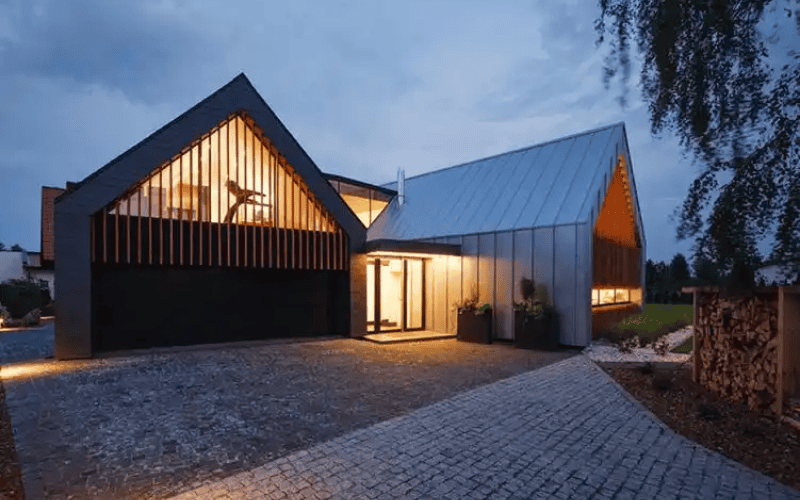
Auf der anderen Seite modulares Haus profitiert von der Effizienz der Fabrik. Materialien werden in großen Mengen eingekauft und die Arbeitsabläufe rationalisiert. Dies kann die Grundkosten senken. Der Individualisierung sind jedoch Grenzen gesetzt, und Änderungen nach der Lieferung können teuer werden.
Wenn Sie sich fragen, warum die Gesamtkosten so stark variieren können, sind hier die wichtigsten Faktoren, die wirklich einen Unterschied machen:
- Standortvorbereitung und Fundamenttyp
- Grad der Anpassung
- Materialpreise (Stahl vs. Holz)
- Oberflächen und Ausstattung
- Gebühren für örtliche Genehmigungen und Versorgungsanschlüsse
Wenn Sie ein einfaches, kleineres Haus bauen, ist ein modulares Haus im Allgemeinen die bessere Wahl. Wenn Sie mehr Platz, ein einzigartiges Design oder eine lange Lebensdauer wünschen, bietet ein Barndominium möglicherweise ein besseres Preis-Leistungs-Verhältnis – auch wenn es zunächst nicht die günstigste Option ist.
Anstatt also einfach zu fragen „Welches ist billiger?“, wäre eine bessere Frage vielleicht:
Welches bietet Ihnen mehr von dem, was Sie wirklich wollen – für das Budget, mit dem Sie arbeiten?
Welches benötigt weniger Zeit zum Erstellen?
Nehmen wir an, Sie haben gerade ein Grundstück gekauft und möchten noch vor dem Sommer einziehen. Die Zeit läuft. Die Frage ist nun: Können Sie mit einem Barndominium oder einem Fertighaus schneller ans Ziel kommen?
A modulares Haus ist auf Schnelligkeit ausgelegt. Da der Großteil der Struktur in einer Fabrik gefertigt wird, kann der Bau parallel zur Baustellenvorbereitung voranschreiten. Sobald die Module eintreffen, kann die Endmontage nur wenige Wochen dauern. Wenn alles passt – Genehmigungen, Wetter, Lieferungen – ist es möglich, innerhalb von drei bis vier Monaten vom Vertrag bis zum Einzug zu gelangen.
A Barndominiumwird dagegen komplett vor Ort gebaut. Das bedeutet, dass alle Phasen – Fundament, Rahmen, Isolierung, Innenausbau – nacheinander erfolgen. Der Zeitplan ist flexibler, insbesondere wenn Sie Ihr Design individuell anpassen. Je nach Komplexität und Standortbedingungen kann sich die Bauzeit jedoch auch auf 5–8 Monate verlängern.
Der entscheidende Unterschied liegt hier nicht nur in der Anzahl der Tage, sondern darin, wie viel vom Prozess Sie kontrollieren können. Fertighäuser folgen einem engen Zeitplan, der nach Produktionsbeginn weniger Spielraum für Änderungen lässt. Barndos bietet Ihnen mehr Spielraum für Anpassungen, bedeutet aber auch mehr Entscheidungen, mehr bewegliche Teile und ein höheres Risiko für Verzögerungen.
Wenn also Geschwindigkeit Ihre oberste Priorität ist, modular gewinnen könnte. Aber wenn Sie bereit sind, mehr Zeit zu investieren, um genau das zu bekommen, was Sie wollen, Barndominium gibt Ihnen diese Freiheit.
Welche Option hält länger und erfordert weniger Wartung?
Wenn es um Langlebigkeit geht, können sowohl Barndominium- als auch Fertighäuser auf Langlebigkeit ausgelegt sein. Allerdings geschieht dies auf unterschiedliche Weise – und das beeinflusst den Wartungsaufwand im Laufe der Zeit.
Barndominiums werden fast immer mit einem Stahlrahmen und einer Metallfassade gebaut. Die Materialien sind konstruktionsbedingt freiliegend, d. h. sie sind den Elementen direkt ausgesetzt. Aber auch hier glänzt Stahl: Er ist resistent gegen Feuchtigkeit, Schädlinge, Feuer und Verfall. Ein gut gebautes Barndominium kann Jahrzehnte ohne größere strukturelle Reparaturen überdauern, und die Metallverkleidung und das Dach halten oft 40 Jahre oder länger bei minimalem Wartungsaufwand.
Modulare HäuserJe nach Bauherr kann entweder ein Holz- oder ein Stahlrahmen verwendet werden. Selbst bei einem Stahlrahmen wird die Außenseite typischerweise mit Materialien wie Vinylverkleidungen und Asphaltschindeln verkleidet – eher wie bei einem traditionellen Haus. Diese Schichten bieten Isolierung und Flexibilität bei der Gestaltung, können sich aber schneller abnutzen. Die Verkleidung kann verblassen oder reißen, Schindeln müssen möglicherweise ausgetauscht werden und Holzkomponenten (falls verwendet) müssen häufiger auf Feuchtigkeit oder Schädlinge überprüft werden.
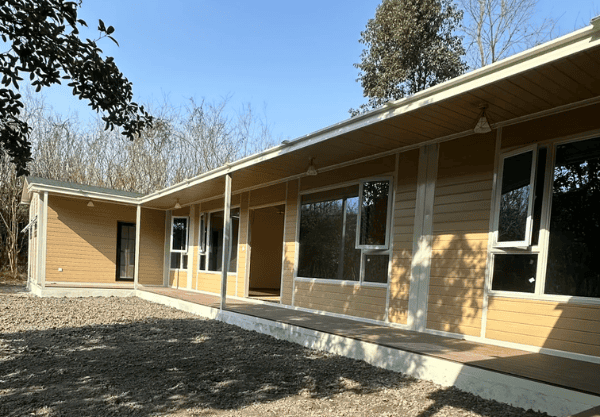
Die Frage ist also nicht nur: „Woraus besteht es?“, sondern wie ist es aufgebaut – und welche Teile sind dem Verschleiß ausgesetzt?
Wenn Sie in einem Klima mit hoher Luftfeuchtigkeit, Temperaturschwankungen oder starken Stürmen bauen, BarndominiumDie Stahlhülle von könnte Ihnen mehr Seelenfrieden geben. Weniger Neuanstrich. Weniger Dachprobleme. Geringeres Risiko von Fäulnis oder Termiten.
Wenn Sie jedoch in einer milderen Umgebung leben und das Aussehen und die Atmosphäre eines traditionellen Hauses bevorzugen, modulares Haus– insbesondere eines mit Stahlrahmen – kann dennoch eine langlebige Wahl sein. Stellen Sie sich jedoch auf einen etwas höheren Pflegeaufwand im Laufe der Zeit ein.
Fragen Sie sich:
Möchte ich ein Zuhause, an dessen Instandhaltung ich kaum denken muss? Oder bin ich mit gelegentlichen Aktualisierungen zufrieden, damit alles frisch aussieht?
Welches ist besser für das Leben auf dem Land oder ohne Stromnetz?
Nehmen wir an, Sie haben gerade ein Grundstück auf dem Land gekauft. Es ist ruhig. Weitläufig. Kein Stadtlärm, keine Nachbarn – nur Land. Klingt perfekt, oder?
Aber jetzt kommt der schwierigere Teil: darauf aufzubauen.
Ländliche und netzunabhängige Standorte bringen ihre eigenen Herausforderungen mit sich. Sie müssen möglicherweise mit großen Entfernungen zu Versorgungseinrichtungen, unwegsamem Gelände, eingeschränkter Verfügbarkeit von Bauunternehmern oder strengeren Bauvorschriften zu kämpfen haben. Wie schlagen sich Barndominiums und Fertighäuser in diesen Umgebungen?
Site-Zugriff und Bereitstellung
Fertighäuser werden außerhalb der Baustelle gebaut und in großen Abschnitten geliefert. Das bedeutet, dass Ihr Grundstück mit LKW und Kran erreichbar sein muss. Bei engen oder unbefestigten Straßen kann die Lieferung kompliziert oder ohne zusätzliche Vorbereitung sogar unmöglich werden. Barndominiums hingegen werden vor Ort aus Rohmaterialien gebaut, die in kleineren Mengen leichter zu transportieren sind.

Versorgungsunternehmen und netzunabhängige Systeme
Keine der beiden Optionen ist standardmäßig vollständig netzunabhängig, aber Barndominiums ziehen oft Hausbesitzer an, die sich mehr mit Solarenergie, Regenwasserauffangsystemen und Kläranlagen auskennen. Der offene Innenraum erleichtert zudem die flexible Planung mechanischer Systeme. Auch modulare Häuser lassen sich anpassen, allerdings können einige netzunabhängige Modifikationen (wie z. B. individuelle Sanitärlayouts) nachträgliche Änderungen erfordern.
Klima und Haltbarkeit
Wenn Sie an einem Ort mit extremen Wetterbedingungen bauen – denken Sie an starken Wind, starken Schneefall und große Temperaturschwankungen –, kann ein Barndominium mit Stahlrahmen den Belastungen besser standhalten. Es ist auf Robustheit und minimalen Wartungsaufwand ausgelegt. Modulhäuser können dennoch stabil sein, insbesondere mit einem Stahlrahmen, aber die Außenmaterialien können je nach Bauherr weniger robust sein.
Welches passt also besser in eine ländliche Umgebung?
- Wenn Ihr Grundstück schlecht zugänglich oder uneben ist → Barndominium
- Wenn Ihr Ziel Geschwindigkeit ist und Ihr Land flach ist und eine gute Straßenanbindung hat → Modulares Haus
- Wenn Sie mit maximaler Flexibilität vom Netz gehen möchten → Barndominium
- Wenn Sie Plug-and-Play-Einfachheit bevorzugen → Modulares Haus
Es hängt alles von Ihrem Grundstück, Ihrem Lebensstil und davon ab, wie viel Kontrolle Sie über den Bauprozess haben möchten.
Wie schneiden sie hinsichtlich Stil und Innenraumgestaltung ab?
Wenn es um die Gestaltungsfreiheit geht, bieten Barndominiums und Fertighäuser ganz unterschiedliche Erfahrungen – sowohl in Bezug auf ihre Bauweise als auch auf das Gefühl, das sie vermitteln, wenn man sie betritt.
Modulare Häuser werden in vorgefertigten Abschnitten hergestellt, was bedeutet, dass die Grundrisse bestimmten Strukturmustern folgen. Räume sind oft getrennt, Flure schmaler und die Deckenhöhen tendenziell standardisiert. Das bedeutet nicht, dass es ihnen an Stil mangelt – Sie können dennoch zwischen modernen Oberflächen, offenen Küchen und schöner Beleuchtung wählen –, aber die Gesamtstruktur ist eher starr. Wenn Sie Ordnung, Symmetrie und traditionelle Grundrisse mögen, sind modulare Lösungen genau das Richtige für Sie.
Barndominiums, hingegen sind für ihre großzügigen, offenen Räume bekannt. Dank der freitragenden Stahlkonstruktion sind keine tragenden Innenwände erforderlich. Das öffnet den gesamten Grundriss – Küche, Ess- und Wohnbereich können unter hohen Decken ineinander übergehen. Sichtbalken, große Fenster und Schiebetüren im Scheunenstil sind nicht nur Designelemente, sondern Teil der Barndo-DNA.
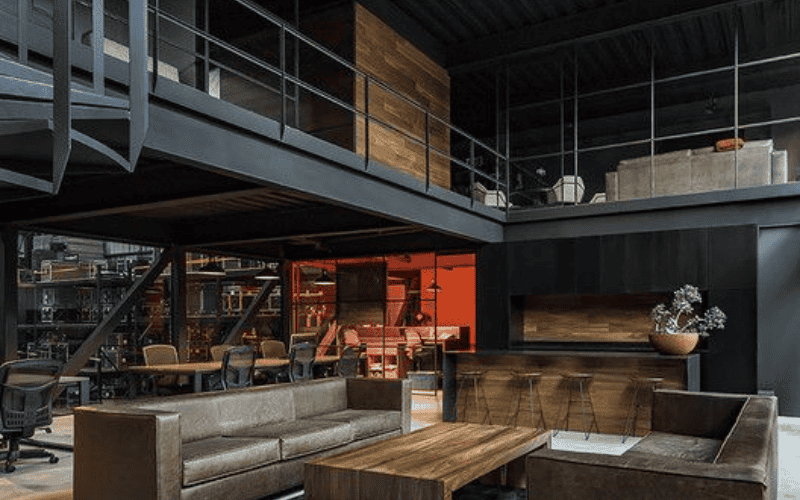
Stellen Sie sich das so vor:
- Ein Fertighaus ist wie ein gut redigierter Roman – sauber, strukturiert, vorhersehbar.
- Ein Barndominium ist eher wie eine leere Leinwand – Sie entscheiden, was daraus wird.
Wenn Sie sich vorstellen, Familienessen in einem großen offenen Raum zu veranstalten oder aufzuwachen und das Sonnenlicht durch ein 12 Fuß großes Fenster strömen zu sehen, dann ist ein Barndo könnte Ihr Match sein. Aber wenn Sie jemand sind, der definierte Räume und ein klassisches Wohngefühl schätzt, modular passt vielleicht besser zu Ihnen.
So oder so, beides kann schön sein – es kommt nur darauf an, was sich für Sie wie Zuhause anfühlt.
Kann ich sie an die Bedürfnisse meiner Familie anpassen?
„Kann ich das Layout ändern?“
„Kann ich ein Homeoffice hinzufügen?“
„Was ist, wenn ich später erweitern möchte?“
Wenn Sie sich diese Fragen stellen, sind Sie nicht allein – und die Antworten hängen davon ab, welche Art von Haus Sie bauen.
Barndominiums bieten nahezu völlige Freiheit bei der Gestaltung. Da die Struktur durch den Stahlrahmen gestützt wird, können Innenwände beliebig platziert oder ganz entfernt werden. Benötigen Sie eine größere Küche? Mehr Freiraum? Zwei Master-Suiten? Kein Problem. Sie können auch für zukünftige Erweiterungen vorausplanen, indem Sie einen Teil der Grundfläche unvollendet lassen oder zusätzliche Zonen einplanen.
Modulare Häuser Auch modulare Bauweisen können individuell angepasst werden, allerdings mit mehr Einschränkungen. Der Grundriss muss in transportable Abschnitte unterteilt werden, daher können größere Layoutänderungen schwierig sein. Möchten Sie eine Wand versetzen oder die Rohrleitungen erneuern? Das erfordert möglicherweise einen Rückgriff auf den Werksplan – oder Anpassungen vor Ort nach der Lieferung, was zusätzliche Kosten verursacht. Einige Modulbauer bieten eine Reihe voreingestellter Konfigurationen mit optionalen Anpassungen an, aber echte Anpassungen sind kontrollierter.
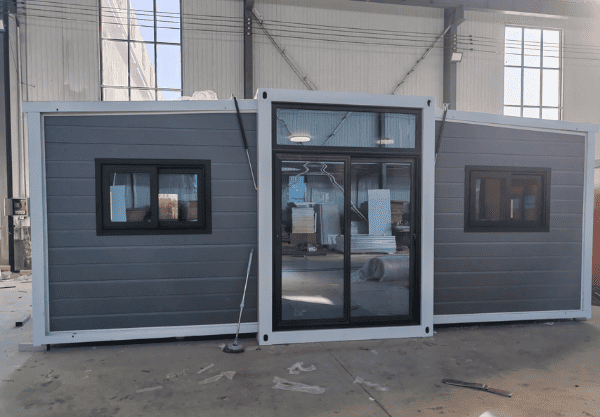
Was bedeutet das also für Sie?
Wenn Sie jetzt genau wissen, was Sie brauchen – und nicht erwarten, dass sich das ändert –modular könnte gut funktionieren. Aber wenn Ihre Familie wächst, Sie planen, an Ort und Stelle zu altern, oder Sie einfach die Möglichkeit haben möchten, sich im Laufe der Zeit anzupassen, ist die Flexibilität eines Barndominium ist kaum zu übertreffen.
Fragen Sie sich:
Passt Ihr Zuhause in fünf oder zehn Jahren noch zu Ihrem Leben?
Wenn sich Ihre Bedürfnisse ändern, kann sich Ihr Raum dann mit Ihnen ändern?
Ist es für das eine einfacher, eine Finanzierung und Genehmigung zu erhalten als für das andere?
Das ist ein häufiges Hindernis: Sie haben das Grundstück gefunden und sich für den Haustyp entschieden – doch dann zögert die Bank oder der Bezirksinspektor zieht die Augenbrauen hoch.
Sowohl Barndominiums als auch Fertighäuser können finanziert und genehmigt werden. Allerdings verlaufen sie nicht immer gleich, und Missverständnisse können den Bauprozess verlangsamen.
Finanzierung
Kreditgeber wollen vor allem eines: geringes RisikoDas bedeutet, dass Ihr Haus dauerhaft, versicherbar und mit anderen in der Gegend vergleichbar sein muss.
Modulare Häuser bestehen diesen Test in der Regel problemlos. Da sie nach staatlichen Vorschriften gebaut, auf einem festen Fundament errichtet und wie Holzhäuser bewertet werden, behandeln viele Banken sie wie herkömmliche Häuser.
Barndominiums kann etwas schwieriger sein – nicht, weil sie nicht solide sind, sondern weil sie seltener vorkommen. Manche Gutachter haben Schwierigkeiten, Vergleichsobjekte zu finden, und manche Banken weisen möglicherweise auf die „Scheune“ im Namen hin. Tatsächlich ist eine Finanzierung jedoch möglich, wenn das Gebäude als Wohngebäude konzipiert und den Vorschriften entsprechend gebaut ist. Es erfordert möglicherweise nur weitere Gespräche und den richtigen Kreditgeber.
Genehmigungen
Die Genehmigung hängt ab von lokale Zonengesetze und BauvorschriftenEinige Landkreise sind mit modularem Wohnen vertrauter und haben klare Regeln. Andere sind bei Barndominiums möglicherweise vorsichtig – insbesondere, wenn sie in landwirtschaftlichen Zonen liegen oder die Pläne stark individuell gestaltet sind.
Das bedeutet nicht, dass Sie keine Genehmigung erhalten können. Es bedeutet nur, dass Sie frühzeitig die richtigen Fragen stellen müssen:
- Ist Ihr Grundstück für Wohnzwecke ausgewiesen?
- Sind in Ihrem Landkreis bestimmte Zertifizierungen oder Inspektionen erforderlich?
- Gibt es Einschränkungen hinsichtlich der Optik oder Dachneigung?
Was sollten Sie tun?
Beginnen Sie frühzeitig. Rufen Sie Ihren Landkreis an. Sprechen Sie mit Ihrem Kreditgeber. Zeigen Sie ihm Pläne. Fragen Sie nach Vergleichsobjekten. Und wenn Sie Zweifel haben, arbeiten Sie mit einem Bauunternehmer zusammen, der diesen Prozess bereits durchlaufen hat – er kann oft beide Gespräche leiten.
Wenn Sie die ruhigere, vorhersehbarere Route wünschen, modular kann einfacher sein.
Wenn Sie bereit sind, für ein persönlicheres Zuhause etwas mehr Arbeit zu investieren, Barndominiums sind absolut machbar.
Wie ist der Wiederverkaufswert und der langfristige Wert?
Sie bauen vielleicht Ihr Traumhaus – aber eines Tages könnte jemand anderes darin wohnen. Wie schlagen sich Barndominiums und Fertighäuser, wenn es Zeit zum Verkauf ist?
Es gibt keine allgemeingültige Antwort. Aber der Markt verändert sich.
Barndominiums, einst als Nischenobjekte betrachtet, erfreuen sich zunehmender Beliebtheit – insbesondere in ländlichen und vorstädtischen Gebieten. Der moderne Bauernhaus-Look, die offenen Innenräume und die Stahlkonstruktion sprechen jüngere Käufer an, die nach etwas Besonderem suchen. Der Wiederverkaufswert kann jedoch stark vom Standort abhängen. In Gegenden, in denen Barndos noch selten sind, sind manche Käufer und Gutachter möglicherweise nicht vertraut, was sich auf den wahrgenommenen Wert oder die Finanzierung auswirken kann.
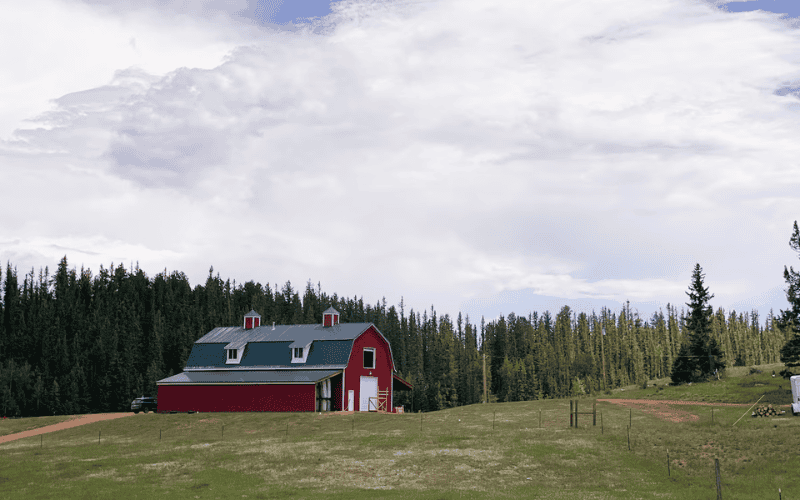
Modulare Häuser, profitieren hingegen davon, auf dem Markt „unsichtbar“ zu sein. Für die meisten Käufer sehen sie wie jedes andere Haus aus. Wenn sie nach Wohnbauvorschriften gebaut und auf einem festen Fundament errichtet wurden, werden sie in der Regel genauso bewertet und verkauft wie ein Holzhaus. Der Wiederverkauf verläuft oft reibungsloser, insbesondere in Vierteln mit anderen Fertighäusern oder traditionellen Häusern in der Nähe.
Der Wiederverkaufswert hängt jedoch nicht nur von der Struktur ab, sondern auch von der Umgebung. Die Grundstücksqualität. Die lokale Nachfrage. Die Instandhaltung. Modernisierungen.
Ein gut gepflegtes Barndominium auf einem 2 Hektar großen Grundstück lässt sich möglicherweise schneller verkaufen als ein Fertighaus, das auf einem engen Grundstück mit begrenzter Attraktivität eingezwängt ist.
Was sollten Sie also beachten?
- Wenn Sie in einem wachsenden Markt mit steigender Nachfrage nach modernem Landleben sind, Barndominium kann eine kluge langfristige Investition sein.
- Wenn Sie eine sichere, stabile Wiederverkaufsleistung und breite Marktakzeptanz wünschen, modular bietet weniger Überraschungen.
Bauen Sie, was heute zu Ihrem Leben passt – aber vergessen Sie nicht, auch an den nächsten Käufer zu denken.
Möchten Sie einen schnellen Vergleich? Hier ist eine Zusammenfassung
Wenn Sie wenig Zeit haben oder einfach nur eine kurze Auffrischung brauchen, zeigt diese Tabelle auf einen Blick die wichtigsten Unterschiede zwischen Barndominiums und Fertighäusern:
| Besonderheit | Barndominium | Modulares Haus |
| Struktur | Stahlrahmen, vor Ort gebaut | Im Werk eingebaute Module, vor Ort montiert |
| Designflexibilität | Hochgradig anpassbare, offene Layouts | Mäßige Flexibilität, vorgefertigte Grundrisse |
| Bauzeit | 5–8 Monate (variiert je nach Anpassung) | 3–4 Monate (schneller, vorhersehbarer) |
| Kostenspanne | Flexibel; abhängig von Größe und Ausstattung | Standardisierter; leichter zu schätzen |
| Wartung | Niedrig (Stahlkonstruktion, weniger Reparaturen) | Mäßig (hängt von den verwendeten Materialien ab) |
| Off-Grid-Eignung | Hoch (anpassbar an abgelegene/ländliche Gebiete) | Mäßig (hängt vom Site-Zugriff ab) |
| Finanzierung & Genehmigungen | Möglich, erfordert aber möglicherweise mehr Laufarbeit | Im Allgemeinen einfacher, kreditgeberfreundlicher |
| Wiederverkaufswert | Steigendes Interesse; abhängig vom Standort | Stabil; breite Akzeptanz auf dem Wohnungsmarkt |
Jeder Build ist mit Kompromissen verbunden.
Manche Menschen entscheiden sich für Barndominiums, weil sie dort kreative Freiheit, Langlebigkeit und einen ländlichen Lebensstil bieten. Andere bevorzugen Fertighäuser wegen der Schnelligkeit, Vorhersehbarkeit und einfacheren Finanzierung.
Nachdem Sie nun das Gesamtbild nebeneinander betrachtet haben – was fühlt sich für Sie richtig an?
Immer noch nicht sicher? So entscheiden Sie sich
Es ist in Ordnung, wenn Sie noch unentschlossen sind. Bei der Wahl des richtigen Haustyps geht es nicht nur um die technischen Daten – es geht um Lebensstil, Prioritäten und darum, wie Sie Ihren Alltag gestalten möchten.
Machen wir es also einfach.
Ein Barndominium könnte Ihnen gefallen, wenn …
Sie wünschen sich Platz – drinnen und draußen. Hohe Decken, offene Grundrisse und vielleicht eine integrierte Werkstatt oder einen Hobbyraum gefallen Ihnen. Sie haben keine Angst davor, etwas anders zu sein. Sie legen Wert auf Langlebigkeit und wünschen sich ein Haus, das sich Ihren Bedürfnissen anpasst. Vielleicht bauen Sie auf einem ländlichen Grundstück und wünschen sich mehr Kontrolle über die Gestaltung.
Ein Fertighaus ist für Sie vielleicht besser geeignet, wenn …
Sie möchten ein bezugsfertiges Objekt mit möglichst wenig Aufwand. Sie legen Wert auf klare Grundrisse und effiziente Planung. Sie bauen auf einem Vorortgrundstück oder in einer Gegend mit Bauvorschriften. Ihnen gefällt die Vorstellung eines schnelleren Zeitplans, einer einfacheren Finanzierung und eines reibungslosen Genehmigungsprozesses.
Immer noch unsicher? Dann fragen Sie sich Folgendes:
- Möchte ich kreative Freiheit – oder Vorhersehbarkeit?
- Baue ich für heute – oder entwerfe ich für die nächsten 20 Jahre?
- Möchte ich es schnell erledigen – oder auf meine Art?
Wie auch immer Ihre Antwort ausfällt, der richtige Weg ist nicht nur der, der auf dem Papier gut aussieht.
Es ist das, was zu Ihrem Leben passt – und sich wie zu Hause anfühlt.
Ihr zukünftiges Zuhause beginnt hier
Sie sind nur noch eine Entscheidung davon entfernt, voller Zuversicht – und nicht voller Verwirrung – voranzukommen.
Möchten Sie viel Platz und Raum zum Wachsen? Beginnen Sie Ihre Barndominium-Reise →
Suchen Sie nach Geschwindigkeit, Einfachheit und Seelenfrieden? Fordern Sie Ihr Angebot für ein Fertighaus an →
Brauchen Sie Hilfe bei der Entscheidung? Sprechen Sie mit einem echten Designberater – kein Druck, nur Antworten →
Lassen Sie sich nicht von Unentschlossenheit zurückhalten. Ihr Land wartet. Und Ihre Zukunft auch.
